Seattle Times and KUOW apparently cannot wait to waste more money locking up kids.
DANIEL ZENDER
Comments
Please wait...
Comments are closed.
Commenting on this item is available only to members of the site. You can sign in here or create an account here.

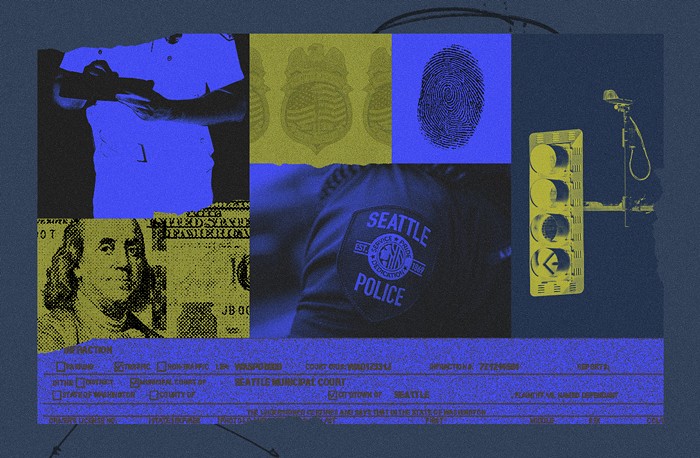
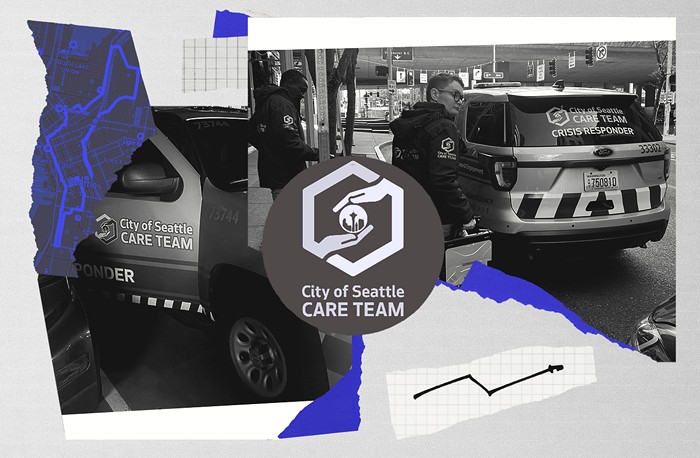
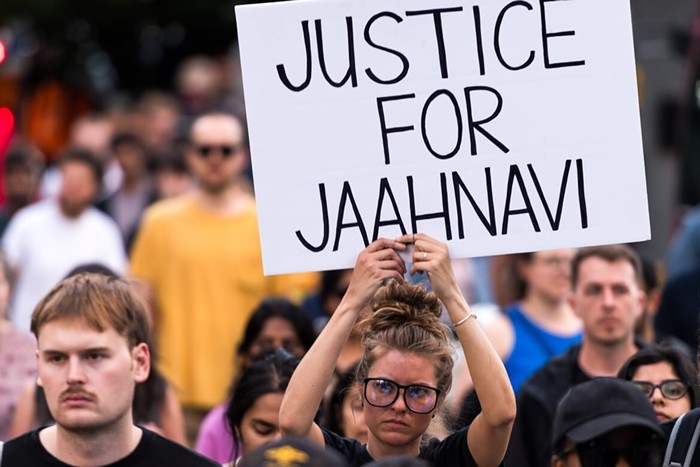
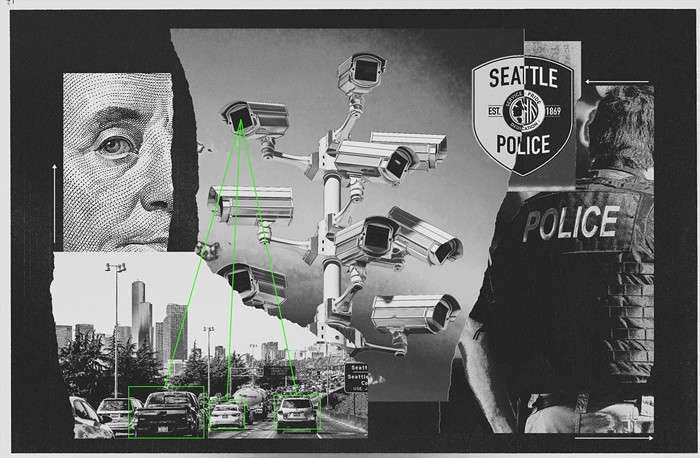

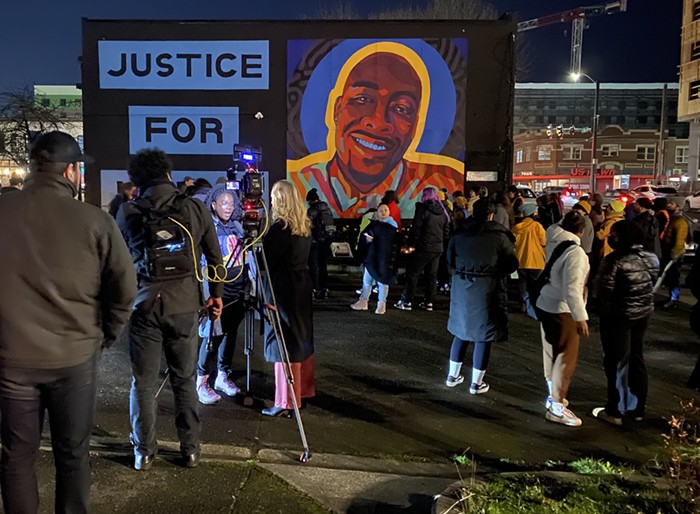













"KUOW’s choice to use unproven allegations against Adams in its article presumes his guilt and flattens out a complex situation into a simple narrative of bad guy versus innocent victim, which… doesn’t follow best practices."
Adams isn't facing unproven allegations: he's been indicted for first-degree assault, first-degree burglary, and unlawful possession of a firearm, and is currently being held in custody on $1 million bail.
It's perfectly appropriate for KUOW to raise the fact Adams will be tried for, among other things, gun crimes. This is nothing more than accurate factual reporting.
An entire article at the Stranger, complaining about supposedly sloppy reporting at one of Seattle’s most reputable news sources, would be funny enough already. Having the Stranger support these complaints with questionable assertions makes it even better.
“(1) The County fails adequately to track a new youth diversion program as well as a gun violence prevention program.”
The evidence this isn’t true?
“But the County knows a lot about RPKC’s work and its nonprofits. RPKC contracts with Harborview Medical Center, for instance, which King County owns.”
The second sentence is not proof of the first sentence being true, and neither refute the claim at (1). King County owns a lot of things.
“As an RPKC contractor, Community Passageways submits monthly and quarterly reports on the organization’s work, said Katoya Palmer, chief operating officer for the nonprofit.”
So, the “proof” (1) isn’t true consists of one person, who has a great personal interest in it not being true, saying it isn’t true? Has the Stranger any independent confirmation of this? (Public record request, perhaps?)
“RCP’s nonprofits also provide quarterly reports to the County, though the nonprofits stick to sharing high-level information such as the number of prosecutor referrals in a given quarter and the total funds the nonprofits distributed.”
That’s pretty weak sauce for a claim these nonprofits are subject to adequate oversight.
Likewise, it’s kind of hard to believe a program is working when the program’s proponents described it like this:
“Some youth may never go, some may go for a little while, and some may stay for a long time.”
So, what does the tracking data say about these sub-populations? Is there any tracking data at all? If not, the claim the County provides proper oversight remains unsupported.
“Anecdotally, Hung says his office doesn’t see a significant number of kids referred to RCP reappearing in the prosecutor’s office with new arrests.”
The word “significant” does a lot of heavy lifting in that sentence, and the implied claim they can’t track recidivism is blatantly false, as the last time anyone checked, court records are available for review by auditors.
“By the time Adams turned 19, a court sentenced him to prison, where he remained for 10 years, got out, and then went back for another five years,”
Maybe the problem here was in hiring for a diversionary program someone who could not himself stay out of prison?
@1: "Adams isn't facing unproven allegations: he's been indicted for first-degree assault, first-degree burglary, and unlawful possession of a firearm, and is currently being held in custody on $1 million bail."
Actually, an indictment is exactly an unproven allegation. That's literally what an indictment is.
That said, the presumption of innocence applies to the government's consideration of whether to LOCK SOMEONE IN JAIL. It doesn't apply to the government's consideration of whether to HIRE SOMEONE FOR A JOB.
@3 The issue is Ashely is suggesting its a violation of journalistic best practices to reference criminal charges, which is absurd. It could be problematic to reference mere allegations if no charges had been brought, but that’s not what is going on here at all.
@2 thanks for breaking that down. What a great opportunity for TS to show some data to refute the articles and back up their positions. Alas that is a bit too high a bar so we go back to the tried and true method of throwing stones. It’s disappointing to see TS wasting the voice they have in this community.
The Koch Brothers and their ilk started throwing big sponsorship bucks at NPR years ago, and the coverage has continued to shift to where the money is. I quit donating after about the fifth shill from a right-wing think tank appeared as an "expert" on All Things Considered, with the host serving up softball questions and absolutely no other guest to refute the answers. The next time someone comes on to offer political commentary, Google them and see where they are on the political spectrum.
Ashley, re-read what you wrote: “In its first year, RCP’s most recent quarterly report showed that a little more than half the youth referred to the program accepted services. The organization dispersed about $282,500 to those youths and to their families. RCP also helped the “harmed parties” in these cases, giving out about $6,200 to those people in the first year.”
Allow me to re-write that paragraph for you: In its first year, RCP gave $282,500 to 50% of the criminals who participated and gave $6,200 to the survivors of their violence. The other 50% of the criminals didn’t even show up to participate and to quote Stephanie Trollen in an internal email, some cases have “fallen off the truck.”
Admit you’re a brainless acolyte for Leesa Manion and Jimmy Hung who has no critical thinking skills. Ann Dornfeld can write circles around you.
@5, @8: We can define success or failure of the diversionary program in terms of recidivism — if the offenders diverted from prison re-offend at a statistically-significantly lower rate than the offenders sent to prison. Making this determination would require collection of data which are currently not being collected — even the Stranger winds up backhandedly admitting this — so we won’t know if diversion helped or not.
But that’s our definitions of “success” and. “helped.” The Stranger ideologically opposes imprisonment, and so anything that reduces imprisonment — including simply letting juvenile offenders constantly re-offend, until they are no longer juveniles — is “success” and “helped” to the Stranger.
“adolescents who were incarcerated were nearly four times more likely to be incarcerated in adulthood than comparable peers who were not confined.” It's unlikely that there were no differences between the kids being locked up and the kids who were not confined. Things like prior offenses, severity of the instant crime, lack of cooperation with pre-trial supervision and so on.
The Stranger article does a good job of supporting the criticisms made the the Times and KUOW. Nothing like good intentions and money blindly thrown at problems.
@11: Your confusion is warranted. The Stranger wants to disprove the other media articles by citing facts, but the Steanger’s attempts to find said facts haven’t found any, so the Stranger is left stating its own opinion as if it is a fact.
Sending people to jail just for possession of a drug is a bankrupt policy. But, the diversion programs used by the King County Prosecutor are nothing at all since there is no consequence for failing to comply. As Jimmy Hung says, the only way they know someone failed at diversion is when they commit a new crime. Then, what happens to the diverted case? Nothing. The accused can just ignore it knowing nothing will happen; of course many of them know that. Studies have clearly shown per the Washington State Institute for Public Policy, https://www.wsipp.wa.gov/ , that enforced drug treatment works for a significant number of people. The possibility of jail/detention keep many in treatment, certainly more than just the offer of treatment with no consequence for failure. Pre-filing diversion is important: there is no public record that the accused was charged with a crime, but any diversion is almost meaningless without some consequence or at least a threat of a consequence.
On a minor point, there are no indictments in Washington. There are no grand juries in Washington. The feds got 'em; the state doesn't.
I have spent some time digging into the history of credible messenger programs, although not Seattle's in particular. Note that credible messenger programs are different than diversionary programs, and neither this article nor the KUOW article (I don't have Times access) distinguishes between them or explains the relationship. But the KUOW article is primarily taking aim at Community Passageways, and based on their website (https://www.communitypassageways.org/mission) it looks like they're doing similar work to the programs that I have looked at.
It seems like the two main concerns here are transparency (in the form of metrics collection) and recidivism of the workers (note that the whole idea of a credible messenger program requires people who have criminal histories, it makes no sense otherwise; the issue of whether or not a credible messenger program makes sense to begin with will be addressed shortly).
Transparency
Despite my opposition to the cult of numbers, I do believe that collecting and analyzing metrics is a valuable and essential part of designing and maintaining effective programs (it just can't be the only part, or given special status that allows it to overrule any other part that disagrees with it). It's not clear to me exactly what data is reported to Harborview or what is done with it. As they are a medical center, I expect that the ways in which they could utilize the data are severely restricted, as I assume that it is considered medical data which rightly has some of the strongest privacy protections in the country. At a minimum, I do think it is important to track the rates at which people who interact with the program (including the extent of the interactions - ongoing meetings for months vs one conversation, how long ago was the most recent interaction, etc) commit further acts of unjustified violence.
However, even with this data, establishing causal links for crime prevention is notoriously difficult. When reviewing academic assessments of these kinds of programs this is made clear, even when they have a positive assessment of the program. From https://www.annualreviews.org/doi/full/10.1146/annurev-publhealth-031914-122509, "Evaluations of complex interventions targeted toward neighborhood change are rife with challenges. Implementing and measuring the effects of gun violence reduction strategies designed to generate community-level change from individual-level program efforts encounter inherent difficulties. When measuring community- or neighborhood-level change, few research designs can control for the many types of confounding factors that influence violence apart from whichever intervention is being studied. [...] Of course, this same criticism could be (and is) leveled at the evaluations of other comprehensive violence reduction programs, even those widely perceived as successful." Note that "other comprehensive violence reduction programs" includes policing.
Still, metrics are useful and they should be collected. And based on the data that we do have, credible messenger programs are worth pursuing. The previously cited literature review came away with the conclusion that the evidence points towards them being helpful, and the National Gang Center (run by the United States Department of Justice) rates this methodology as promising (https://nationalgangcenter.ojp.gov/spt/Programs/139).
Worker Recidivism
This has and always will be a problem with credible messenger programs. In order for the model to work, the people have to be people with criminal histories, and someone who has been caught committing a crime before is more likely to be caught committing a crime in the future. Some people will never be caught committing a crime, because they are scared of the law, they feel a sense of duty to follow it, they are good at manipulating the system to avoid getting caught, they have no motivation to engage in illicit (different than unethical) behavior, or some other reason. And, as noted in this article, "predicting the risk of any particular person based on criminal history, or lack thereof, is notoriously inaccurate". This is true even in programs which have a police officer on the hiring board reviewing every single person that the organization hires.
But this is not a fatal problem. Most workers do not experience recidivism, and even sites with those workers are believed to have reduced violence overall. In Baltimore, a stash of guns and drugs was found on a site (https://www.baltimoresun.com/maryland/baltimore-city/bs-md-ci-safe-streets-raid-20150714-story.html). That site does keep metrics, and they intervened in 136 incidents which were otherwise likely to end in violence. It's also worth noting that the charges against the people working for the site were eventually dropped (https://www.baltimoresun.com/news/crime/bs-md-ci-safe-streets-case-dropped-20160302-story.html).
This is a problem, but the programs are still seen as effective. Just this month, Johns Hopkins released an analysis of the 15-year history of the Baltimore program, where they stated that it "was associated with a statistically significant average reduction in homicides of 32%." (was associated with a statistically significant average reduction in homicides of 32%.). The John Jay research center in NYC evaluated several violence reduction strategies in 2020, including violence interruption. They concluded that while the data is mixed, it is promising and they recommended investing in it (https://johnjayrec.nyc/2020/11/09/av2020/#major).
While there is reason to be optimistic, we do not have certainty about the full long-term effects of these kinds of programs. We need more data, and we need it to be more reliable. We will not get that data by scratching the programs out of existence.
@15: Thank you for that review of existing programs. I’m very much in favor of diversionary programs, especially for juvenile offenders. (Everybody makes mistakes, especially when young.) The problem with the programs the Stranger here defends lies in your last sentence: “We will not get that data by scratching the programs out of existence.” As the Stranger has (unwittingly?) described, that data is not now being collected by these programs, and so King County won’t get the data, whether the programs continue or not. So King County will never know if these programs actually produced better results than the old system. King County needs to provide proper oversight of these programs, so these programs will collect the required data. Then any programs which work can be continued and expanded, and any programs not working can either be reformed, or discontinued.
By pretending King County properly supervises these programs, the Stranger assists in setting these programs up to fail.
Finally, it should be obvious that a “credible messenger” should be someone who once went to prison due to a single episode of youthful bad judgment, not someone who spent most of his adult life there, due to repeated offenses.
@15 tensorna The Stranger's article claims that KUOW and the Times overstate their case in a lack of transparency. It also says "[i]t’s good for KUOW to ask for greater transparency", in spite of this problem. If the problem is that we are not collecting the data we should be, then starting to collect that data is the sensible response. And as that data comes in, we should be mindful of timelines - a few years is not long enough to assess the long-term impact of these programs.
And your point about who credible messengers should be is exactly backwards. If someone made one random mistake as a youth, they have little perspective on the consequences of entering a life of violence. Somebody who has spent years or decades in that life, who can speak to the horror of cyclical retaliation, who can share memories of the friends that they've lost and the opportunities they've abandoned is far more suited to educate people about the reasons why it is worth finding a different path.
@18: The issue isn’t “transparency,” it’s the lack of data upon which to make informed decisions. The article admits the diversionary programs have tracked neither participation rates nor recidivism rates among their juvenile offenders. Therefore, King County has no way of determining if the diversionary programs are successful or not. Without collecting this data, King County will never know if the programs succeed or not, no matter for how many years the county funds these programs. (On recidivism, the evasive non-answer Jimmy Hung gave implies he knows recidivism is already happening, and he doesn’t want it documented.)
How is someone who never escaped the cycles of violence, and who himself has now been formally charged with a slew of first-degree offenses, going to show anyone else how to exit that cycle? Diversion should allow persons who’ve made one-time mistakes move on with their lives, not teach them how repeated wrongful decisions should have no consequences.
@18 & @19 -- I appreciate your dialogue. I've appreciated interesting points from both your POVs.
@20: Thank you. The Stranger seems not to comprehend the need to get such programs executed properly from the start. The Stranger can complain all it wants about the current system, and some or all of those complaints may have merit, but if these diversionary programs fail, we will likely revert to that system.
In particular, a high recidivism rate will likely result in us “scratching these programs out of existence,” and not trying anything like them again for some time. That would be a loss to any future juvenile offenders who truly deserve second chances. I really wish the Stranger would recognize this, instead of claiming any criticism it does not like has no merit, anyone who dares to make it has swallowed “copaganda” and/or wants to “traumatize” young persons.
@19 tensorna I think we might be interpreting the word "transparency" differently here. By my thinking, collecting and analyzing data is the mechanism to achieve transparency (as in, the program being transparent to the county).
I agree that if somebody has committed violence while working for the program (excluding legitimate self-defense, etc) then they should be removed from it. I also think that it is reasonable to suspend someone who is being investigated for violence until the investigation is complete - not because of a presumption of guilt, but to keep the program beyond even the appearance of impropriety.
Violent decisions have consequences without state intervention. When you are in a violent community, you are always on edge, you can't fully trust most people, and the number of people that you truly care for dwindle as violence takes their live. The natural consequences of violence are more than enough deterrence, to the extent that deterrence is effective (it does have some effect, even though its effect is generally overstated). If we substitute the natural consequences of violence for the artificial consequences of the state, then we do more to engender hatred of the state and persuade people that violence would be a good answer if only the state stopped meddling, than we do to persuade people that a peaceful life is a preferable life.
@22: I agree collecting data is vital to transparency, but I associate “transparency,” in a political setting, to mean the actions of the government are open to review by the citizens. For this, data must be honestly and completely collected, and then openly shared. There can be no transparency without accurate data, but for these diversionary programs, accurate data is not being collected, and thus the concerns stated by KUOW and the Times about transparency are valid, not (as the Stranger claims) invalid.
“The natural consequences of violence are more than enough deterrence,”
No, they are not. One of the major reasons we have a justice system is to interrupt cycles of retributive violence amongst individuals.
“If we substitute the natural consequences of violence for the artificial consequences of the state, then we do more to engender hatred of the state…”
A state owns the monopoly on use of violence within its borders. That is part of the definition of a working state. By contrast, a failed state, by definition, cannot enforce this monopoly. If a state does not prevent retributive cycles of violence with its borders, then that should engender hatred (and contempt) for that state.
Another reason for a justice system is to prevent harm from coming to innocent persons. This concern is noticeable by its total absence from the Stranger’s story, and from your comments here upon it. If a diversionary program stops the state from protecting innocent citizens from violence, that program will get shut down rather quickly, possibly preventing future diversionary programs even from existing.
@13 is that why there's no print edition?
I find it hard to plan for stuff when it's all on an events page, instead of physical ads I can stuff in my wallet and pass to friends
@25: Give examples of how I got it wrong, and I’ll take them under consideration.
But my point remains: some number of offenders will adequately benefit from diversionary programs, while some other number won’t, and the poorly-administered programs described in this article seem both unlikely to sort the first from the second, or to help the first. Seattle now ends Community Court, having judged it a failure. Diversionary programs of the kind described here seem likely to bring more of the same results. And that’s a shame, considering all the good diversionary programs could do.
@27: Your sole example consists entirely of what you accuse me of doing, ripping a partial quote out of context. In reality @23, I went on to address the very point you were claiming I had ignored.
As I’d figured, you spent most of your response tediously lecturing me about things you don’t like about me. The idea that Slog commenters strive to be persuasive is pretty amusing all by itself, but better yet, this all comes from someone who has made blatantly racist comments on Slog! Did you persuade a lot of Seattle readers with such comments? Were you attempting to do so?
@23 tensorna
I agree that calls for more transparency are valid, but I disagree that the Stranger is claiming that the calls are invalid. The article claims that KUOW and the Times overstate their case, but also explicitly says that it is good to call for more transparency.
I agree that the intention of a justice system is in part to interrupt cycles of retributive violence. I also agree that intervention is helpful to make the problems of retributive violence clear: this is why I believe that violence interruption is a useful and valuable service to society. Because the consequences of violence are not always immediately apparent, and in the heat of anger we do not always fully think through the consequence.s
The natural consequences of violence provide enough of a stick for deterrence. When the state arrests people and imprisons them, it is trying to increase the size of the stick. This is not the action that is needed. Rather, what is needed is to make the consequences of violence clearer and more present in people's mind. We need to capitalize on the natural consequences of violence, not add additional consequences onto it.
"A state owns the monopoly on use of violence within its borders. That is part of the definition of a working state."
And this is why I am not a statist. Any organization with a monopoly on violence will inevitable be corrupted and abused. This is too much power to entrust into a single entity.
"Another reason for a justice system is to prevent harm from coming to innocent persons. This concern is noticeable by its total absence from the Stranger’s story, and from your comments here upon it."
While I have not directly discussed the matter of preventing harm, concern for minimizing harm underlies all of my reasoning. Imprisonment is not an effective way to reduce violence. Violence interruption is, potentially (and we have reason to believe in its potential), an effective way to reduce violence. Reducing violence prevents harm.
In hopes of persuading you of my concern, I will also say this: I do support prison abolition as a goal, but I do not think that it would be wise to simply abolish prisons overnight. This is because the prison system is a fixture in our society which people expect to guide their behavior. Abolishing prisons overnight would not just end the prison system, it would communicate a message to society that there are no longer consequences for violence - this message would be false, due to the natural consequences of violence, but this is what would be communicated and that act of communication would cause harm.
@25 shoobop I appreciate your support. Personally, I do not think that tensorna is trolling even though I think that their arguments are flawed.
@29: “The article claims that KUOW and the Times overstate their case, but also explicitly says that it is good to call for more transparency.”
The Stranger’s article is so far off-base, it fails to recognize the diversionary programs’ lack of data renders calls for transparency meaningless.
“The natural consequences of violence provide enough of a stick for deterrence.”
Give an example of this one “stick” having been used to stop a cycle of violence, anywhere, ever. Then describe how it can be generalized to our society.
“When the state arrests people and imprisons them, it is trying to increase the size of the stick.”
That is just one of the many reasons the state arrests suspects, tries them in open court, and then imprisons only those suspects whom a jury of disinterested citizens have convicted. One of the others is to protect innocent persons from any future acts of violence by persons already found guilty of it by a jury of citizens. A third reason is to make Justice impersonal, thus severing the connection between victim and criminal — and helping to preclude or end a cycle of violent retribution.
“Imprisonment is not an effective way to reduce violence.”
Please provide evidence to support this assertion. (Should you ever do so, I would counter victims of domestic violence would not agree.) What other method(s) of violence prevention do you recommend?
"Give an example of this one “stick” having been used to stop a cycle of violence, anywhere, ever. Then describe how it can be generalized to our society."
I believe I already provided the academic studies which found promising results in violence interruption programs, which persuade people not use violence based on the natural stick, in comment 15.
"One of the others is to protect innocent persons from any future acts of violence by persons already found guilty of it by a jury of citizens."
And it succeeds in that only for so long as that person is imprisoned. In order for this goal to be truly met within a prison system, we would have to give life without parole for all crimes of violence. If we want to meet this goal without such an extreme measure, then we need a different strategy.
"A third reason is to make Justice impersonal, thus severing the connection between victim and criminal — and helping to preclude or end a cycle of violent retribution."
And I agree that having a third party help mediate the dispute is a good thing.
"Please provide evidence to support this assertion."
We have been imprisoning people for centuries, and violence is still a widespread problem. I am interested in building a society that is truly committed to peace, and prisons have not accomplished that.
" I would counter victims of domestic violence would not agree"
We have been discussing retributive violence until now, and that is what violence interruption is meant to address. Domestic abuse is also an important act of violence that needs to be addressed, and here too violence is not effective even by the desires of the aggressor.
Domestic abuse comes from a need to have control over someone. When violence is used to control people, they are not truly committed to the interests of the aggressor, rather they learn what behaviors will provoke violence, avoid violence, or redirect violence onto other people. There is some overlap between these behaviors and the interests of the aggressor, but it is not an efficient or sustainable way to get what they want.
And if we go deeper into it, the feeling of a need for control often comes from a lack of control in other areas of their lives. Perhaps they are in an authoritarian work environment - in this case, unionizing with their fellow workers would be a more effective means of controlling their lives than domestic violence. Perhaps they come from a family with a domineering head - in this case, cutting ties would be more effective than domestic violence.
I don't know if an equivalent to violence interruption has been developed for domestic abuse. I do know that CeaseFire Chicago, a (now defunct) violence interruption organization experimented with it at some point but it didn't seem to go anywhere, so this is probably not the right tactic. Regardless, violence does not make sense even when considering the interests of the aggressor. Building a society that is truly dedicated to peace is possible.
@31: “Promising results” are not concrete examples, so no, you haven’t provided an example. And should you ever actually find an example, it will occur in the context of having our current justice and prison system as a “stick” to compel behavioral change. It’s a very long way from where we are now to a “society dedicated to peace.” We should still try, of course, but we should have no illusions as to what it will take.
We also need to be forthright about what it will take. You haven’t answered any of my questions about who would share the state’s monopoly on the use of violence (or credible threat thereof) to resolve conflicts. Currently that monopoly rests with a government which is democratically responsible to voters, subject to checks and balances of an independent judiciary, all allocated by a written constitution. If you intend to grant the use of violence to any other entity, then you need to explain how that entity’s use of violence will be regulated and controlled. So far, you have said nothing on that topic.
“And it succeeds in that only for so long as that person is imprisoned. In order for this goal to be truly met within a prison system, we would have to give life without parole for all crimes of violence.”
That assumes our current system cannot reform criminals. A post-prison population so diverse as to include both Malcom X and Tony Sirico would seem not to agree with this assumption.
“We have been imprisoning people for centuries, and violence is still a widespread problem.”
By that standard, no other approach has ever worked either. Why do you believe yours will?
“Domestic abuse is also an important act of violence that needs to be addressed, and here too violence is not effective even by the desires of the aggressor.”
As a tool of manipulation and control, it works all too well in many cases. Interrupting domestic violence is of paramount importance in building a future peaceful society, as childhood victims of domestic violence are at elevated risk of becoming abusers. Imprisonment of domestic abusers is a key tool in keeping their victims alive and healthy, and stopping the cycle of abuse before it reaches a new generation. I’m all for prison programs which counsel domestic abusers, but preventing more victimization now must be our first priority.
No matter how noble your ideals, if you appear more interested in keeping violent criminals out of jail than in protecting innocent victims, then politically your ideals will never be implemented.